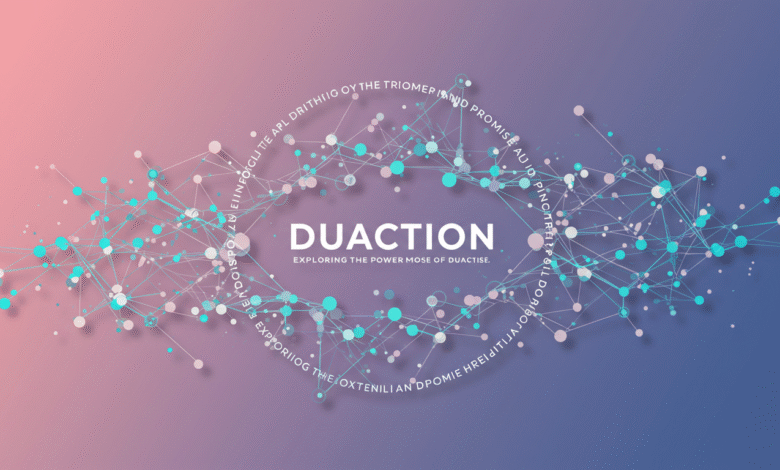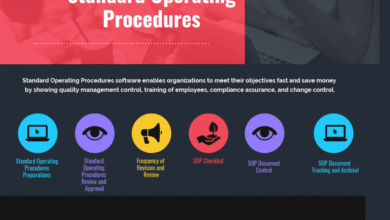Duaction: Exploring the Power and Promise of Duaction
Duaction in Education and Personal Development

In a world saturated with talk and plans, duaction offers a compelling shift: from merely discussing to swiftly doing. This term, a portmanteau of “do” and “action,” captures the spirit of immediate initiative, hands-on engagement, and impactful execution. In this article, we’ll delve into what duaction means, why it matters today, how it works, the challenges it faces, and how you can harness duaction in your personal and professional life.
Duaction: What It Means and Why It Emerged
Duaction refers to the practice of combining strategic thinking with prompt execution. Rather than getting stuck in planning, shapeing, or endless deliberation, duaction encourages swift, iterative action. It’s not rash decision-making but a deliberate synthesis of doing and adapting.
The concept emerges from agile methodologies, lean startups, improvisational art, and action research. In those spheres, value often arises not from perfect plans but from responsive doing and ongoing feedback. Duaction captures that mindset: acting, learning, and refining continuously.
We live in fast-changing environments—technology, markets, culture. Under these conditions, duaction becomes not just a style but a necessity: we can’t wait forever for certainty; we need to act, observe, and adjust.
Origins and Intellectual Roots of Duaction
Though duaction is a newer coined term, its roots draw from:
-
Agile software development, where iteration and incremental delivery trump exhaustive upfront design.
-
Lean startup philosophy, which emphasizes build-measure-learn loops and minimal viable action.
-
Design thinking, which prototypes early to test assumptions.
-
Action research and participatory change, which integrate doing with reflection in organizational change.
-
Entrepreneurial mindset, which values speed, experimentation, and resilience.
By uniting these strands, duation becomes a broader paradigm—not limited to tech startups, but any domainwhere swift, informed action is critical.
Core Principles That Define Duaction
To practice duaction well, certain principles guide the process:
Action over Paralysis
When perfect knowledge is elusive, duction emphasizes starting with what one knows and refining as one moves.
Iterative Learning
Every action yields feedback. With duction, you expect correction, adaptation, and evolution.
Minimum Viable Execution
Rather than waiting for a perfect product, duction focuses on minimal execution that can deliver value and test assumptions.
Reflexive Adaptation
Duaction demands continuous reflection: you do, you observe, and you adjust course.
Collaborative Doing
is social: teams, communities, or networks act together, combining strengths and learning collectively.
Speed and Flexibility
Fast cycles, low friction in execution, and ability to pivot are central to duaction.
Accountability and Ownership
Because actions produce visible results, encourages responsibility and clarity in roles.
How Duaction Differs from Traditional Project Models
In traditional models, planning, detailed design, risk assessment, and approval processes dominate early phases. Execution follows only after lengthy preparation. That can lead to delays, overinvestment in incorrect assumptions, and inflexibility.
Duaction, by contrast:
-
Accepts uncertainty and treats action as a learning tool.
-
Reduces upfront overhead and documentation.
-
Encourages early experimentation and partial implementations.
-
Enables faster feedback, course correction, and pivoting.
-
Favors modular, flexible units of work.
Thus is not chaotic—it is structured learning in motion. The governance differs: instead of plans as commandments, they become hypotheses to test. Outcomes, rather than tasks, guide the journey.
The Value Proposition: Benefits of Duaction
Organizations and individuals that embrace duaction can reap multiple advantages.
Faster Innovation
By iterating quickly, accelerates discovery of what works and what fails.
Reduced Waste
Less time and resources are spent on elaborating unused features or over-designed artifacts.
Better Alignment
Action forces clarity: teams must prioritize what matters most, avoiding distraction.
Resilience
The adaptive nature of allows recovery from missteps and evolving with conditions.
Empowerment
Participants feel agency, seeing immediate effects of their work, rather than waiting months for deliverables.
Real-world Feedback
Rather than relying on speculation, grounds decisions in data from actual use.
Cultural ShiftOver time, a culture of doing, experimenting, and learning replaces stagnation or decision paralysis.
Implementing Duaction: Steps and Strategies
If you wish to incorporate in your work or life, here are actionable steps:
Define a Minimal Actionable Start
Pick a small but meaningful task you can launch quickly—an MVP (minimum viable product), a pilot, a prototype, or a test initiative.
Set Clear, Short Time Horizons
Organize work in time-boxed cycles (weeks or even days), not months or years.
Build Feedback Loops
Include measurement, user responses, data gathering—whatever yields learning from your action.
Reflect and Adapt
After each cycle, pause to analyze what worked, what failed, why—and revise the plan.
Modularize Tasks
Break down work into small modules or units so you can iterate or replace easily.
Encourage Team Ownership
Give team members autonomy over small actions—they feel responsibility and can move faster.
Use Lightweight Governance
Rather than heavy approval chains, trust people to act within broad guardrails.
Embrace Failures as Learning
Not every step will succeed. Failures are experiments, not disasters.
Anchor in Vision
While emphasizes doing, you still need a guiding vision or north star to align actions.
Scale Incrementally
Start at pilot levels, then scale it once processes stabilize and prove value.
Domains Where Duaction Shines
Though duaction can apply broadly, certain settings align particularly well with its philosophy.
Startups and Early Ventures
New ventures thrive when they can test market hypotheses, adapt business models, and iterate rapidly.
Product Development
Software, digital services, or physical products benefit from prototyping, user testing, and responsive development.
Social Innovation and NGOs
Initiatives in education, public health, or community development often require adaptive execution in uncertain contexts.
Organizational Change
When applying reforms in companies or institutions, enables incremental experimentation and cultural shifts.
Creative Projects
Art, media, design, or content creation benefit when creators act fast, test reception, and evolve.
Crisis Response and Emergency Management
In volatile or urgent scenarios, guides timely action with feedback and adaptation.
Everyday Personal Projects
From habit formation to skill building, encourages launching something small and iterating to improvement.
Challenges and Risks of Duaction
Adopting is not without pitfalls. Awareness of risks helps mitigate them.
Overemphasis on Speed
Too much haste may sacrifice quality, integrity, or safety. Balance action with prudence.
Shallow Iteration
If feedback loops are weak or misaligned, becomes busywork—doing without improvement.
Fragmentation and Lack of Coherence
Multiple small actions may diverge unless tied to a unified vision or strategy.
Burnout and Overcommitment
Constant cycles and pressure to produce can fatigue teams if not managed.
Resistance from Traditional Structures
Hierarchical organizations or rigid governance may push back on experimental mode.
Insufficient Reflection
If cycles skip reflective pauses, one repeats mistakes or drifts aimlessly.
Resource Misallocation
Acting too widely without focus may spread scarce resources thin across too many domains.
Measurement Blind Spots
If you track the wrong metrics, you may adapt toward perverse incentives or superficial progress.
Recognizing these risks allows you to design duaction practices with safeguards, balance, and oversight.
Measuring Success in Duaction
To know if duaction is working, you need meaningful indicators. Some measures include:
-
Cycle Velocity: speed and frequency of action cycles (number completed per period).
-
Learning Rate: number of validated insights or course corrections per iteration.
-
Value Delivered: how much benefit (user satisfaction, revenue, impact) the actions yielded.
-
Adaptation Ratio: proportion of cycles in which plans shifted versus repeated.
-
Quality Feedback: user or stakeholder evaluation of the outcomes.
-
Team Morale and Ownership: participant engagement, sense of agency, job satisfaction.
-
Resource Efficiency: cost/time per iteration versus traditional approaches.
-
Resilience Metrics: ability to recover from failures or pivot to new directions.
Crucially, metrics should align with learning and impact, not just output volume.
Case Illustration: Duaction in a Startup
Consider a small tech startup aiming to launch a mobile app. Instead of designing full feature sets for months, they adopt duaction:
-
They release a minimal prototype with core feature.
-
They gather user feedback, usage stats, and drop-off points.
-
In weekly cycles, they adjust UI, add tiny features, remove features, improve performance.
-
They continuously test marketing messaging, pricing, onboarding flows.
-
Teams own small modules (e.g., notification engine, onboarding screens) and act autonomously.
-
Over months, they evolve from MVP to a stable product attuned to real user needs.
Because of duaction, they avoid building unused features, pivot early if needed, and align close to market demand. This example highlights how fosters nimbleness, improved product-market fit, and lean operations.
Personal Duaction: Applying It to Your Life
You don’t need a startup to use duaction. You can apply it personally to habits, projects, growth.
-
Want to learn a language? Start with short daily conversational practice, not months of word lists.
-
Want to start a blog? Publish one post, gather reader feedback, iterate.
-
Project fix at home? Try a small change or experiment and adjust rather than overplanning the entire renovation.
-
Fitness goal? Begin with modest workouts, measure, adapt incrementally.
By applying personally, you develop a bias toward action, learn faster about what fits you, and overcome inertia. The same principles—cycle, feedback, adapt—apply.
Cultivating a Duaction Culture in Teams
To embed duaction in a group or organization, culture matters as much as method.
-
Encourage experimentation, not perfection.
-
Celebrate learning from failure, not just success.
-
Flatten hierarchies—allow decisioning at the edges.
-
Promote transparency of trials, results, and lessons.
-
Provide space for reflection and adaptation.
-
Reward ownership: let people propose and run experiments.
-
Teach tools and habits (retrospectives, rapid prototyping, lightweight metrics).Over time, a duaction culture replaces bureaucracy with entrepreneurial energy and agility
Duaction in the Future: Trends and Evolutions
As environments grow more volatile and complex, duaction may evolve in key ways:
-
Automated experiments: systems autonomously testing variants, collecting data, refining actions.
-
AI-augmented duaction: agents propose micro-actions, simulate outcomes, recommend iterated steps.
-
Hybrid governance: integrated into public sector, policy prototyping, bottom-up regulation.
-
Resilient systems: becomes basis for adaptive infrastructures (energy, transport, health).
-
Networked duaction: multiple actors coordinate micro-actions across regions or sectors for emergent impact.
In these future contexts, becomes not just a method but a paradigm for dynamic systems.
Frequently Asked Questions
What distinguishes duaction from action learning?
While action learning emphasizes group learning through problem solving, duaction adds a bias toward swift iteration and modular execution rather than prolonged cycles of reflection.
Is duaction suitable for large organizations?
Yes, though it may require structural adjustments. Large institutions may pilot duaction in units or teams, then scale successes. Governance must allow controlled autonomy.
Can duaction co-exist with strategy?
Absolutely. doesn’t discard strategy; rather, it treats strategy as flexible hypotheses. The vision gives direction; provides means to test and refine.
Does duation ignore planning?
No. involves planning—but light, hypothesis-driven planning. Plans are treated as assumptions to test, not rigid mandates.
How do you prevent chaos in ?
By anchoring actions in principles, vision, guardrails, regular retrospection, and limited scope per cycle. Structure and discipline remain essential.
When is not ideal?
In highly regulated, safety-critical, or extremely stable environments, where doing incorrectly has severe consequences. In those cases, more rigorous design, testing, or regulation may be necessary.
Conclusion
Duaction marks a shift from talking to doing—but in a smart, adaptive, and structured way. In fast-moving contexts, it offers a powerful approach: act, learn, and evolve. Whether in startups, organizations, social innovation, or personal growth, embeds momentum, clarity, and continuous improvement.
Of course, is not a magical panacea. It requires culture, reflection, balance, and structure. But when embraced with care, becomes a way to overcome procrastination, rigid planning traps, and strategic paralysis.




